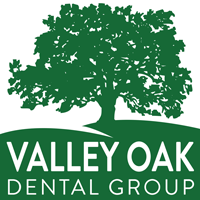Valley Oak Dental Group
With insurance costs, dentists’ fees and the cost of dental materials all rising, it’s a smart move to use your dental benefits before they expire at the end of the year. If you don’t use up your benefits, you lose that money.
In addition, you may be giving up dental care that might otherwise cost you thousands of dollars. However, you can use your dental insurance plan wisely by keeping these key points in mind.
Make the Most of the Premiums You Pay
Don’t let the premiums you pay for dental coverage go to waste. Get your money’s worth by taking full advantage of the benefits your dental insurance plan offers. Even if you don’t currently have any dental problems, insurance plans typically pay for routine checkups and dental cleanings—both of which help prevent small problems from becoming bigger problems.
Although dental benefit plans generally pay a lower percentage toward fillings, crowns and root canal treatment, these plans pay more toward preventive dental care. However, even for preventive procedures, dental insurance plans might have limitations, including how many times during a benefit period you can see a dentist for checkups and professional teeth cleanings.
Take Advantage of Current Benefits Before the Plan Changes
At the beginning of a new benefit period, there may be new requirements or changes to your dental insurance, for example, dentist fees, insurance deductibles and copays may increase. The benefit period, or policy year, is the length of time for which you are eligible to receive coverage.
Most plans are based on a calendar year, but the benefit period for some covers the fiscal year or the 12 months from the plan’s effective date.
Any changes to your coverage can impact the dental treatments you choose since you must pay the remainder of the cost after your dental insurance has paid its percentage. Additional out-of-pocket expenses include the annual deductible, which you must satisfy before your insurance plan pays anything.
A plan may also change its limitations and exclusions. Most plans don’t cover every dental expense and may change the number of visits or procedures they allow. A plan may even change the age limits for receiving certain benefits such as orthodontics.
Therefore, you need to know what procedures your plan covers and how much the insurance will help cover individual dental treatments and procedures.
Understand How Your Deductible Works
The annual deductible is a specified dollar amount you pay out of pocket before your dental insurance starts to pay its percentage of the cost of dental treatment you receive. Not all plans have a deductible but must do, and some plans that have deductibles still over coverage for routine preventive services.
How dental plans apply deductibles varies as well. While some plans apply the deductible to all covered services, not all do. Your plan may only require that you pay toward the deductible when receiving certain services. Keep in mind that copayments are usually not applied toward your deductible.
Higher deductibles mean lower premiums, but if you need a lot of dental services other than routine checkups and cleanings, a lower deductible dental plan may be the better choice for you. The trade-off for a lower deductible plan is paying higher premiums.
Make Your Maximum Benefit Amount Count
The maximum benefit amount is the total dollar amount your dental insurance will pay toward non-routine dental claims for that benefit period. Most plans limit the annual benefit maximum to $1,500, but some plans have a higher limit. Although the coverage your plan offers renews every year, the plan doesn’t carry over any unused benefits. Therefore, if you need dental work and haven’t used up your annual maximum, do so before the end of the year.
If you think you may need extensive dental work and the cost will exceed your annual maximum, you can divide the treatments over the end of one year and into the beginning of the next. Otherwise, if you reach your maximum amount before the benefit period ends, you must pay the cost of any additional dental work you receive before the next benefit period begins.
Dentists know that patients often don’t completely understand how their dental benefits work, particularly when it comes to annual maximums. Many patients aren’t even aware that their dental plan includes an annual maximum.
Therefore, some dentists notify patients—especially those who need treatment—who still have unused benefits so that they have the opportunity to schedule an appointment before their benefit period ends. Your dentist may inform you of an unused benefit amount and let you know of dental problems that they haven’t treated yet.
If you’ve been putting off a visit to your dentist, the realization that you will lose benefits at the year’s end may be incentive to get you there.
If you haven’t yet reached your annual benefit maximum and have some unfinished dental work, the dental team of Valley Oak Dental Group offers a wide range of dental services to meet your needs. Contact our team today!
Share Post
Search Post
Recent Posts








